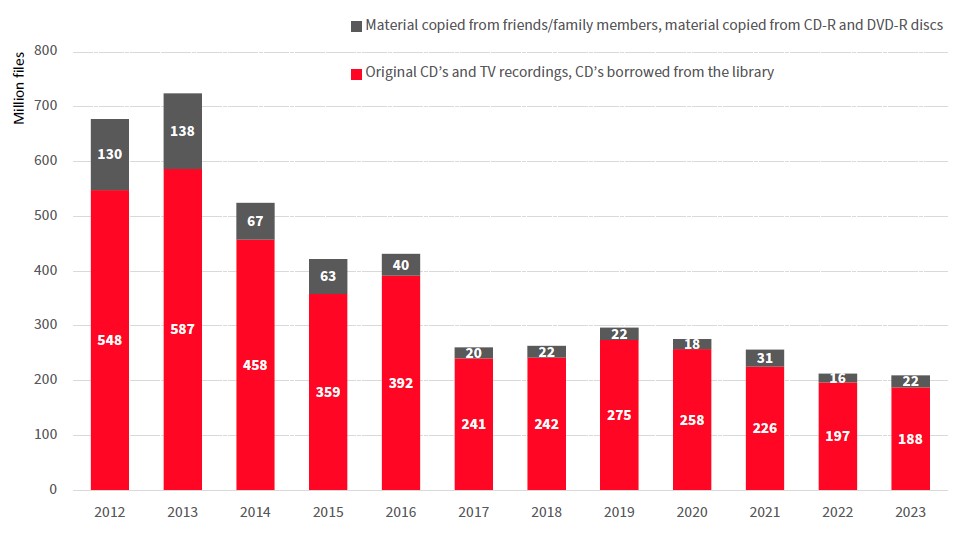Survey: private copying continues to decline

According to the study, the total number of private copying among 15-79-year-olds has decreased. Compared with 2015, the number of people making private copying has halved. Similar information was last gathered by Taloustutkimus in 2022.
According to the study, music that fell under the scope of legal private copying was copied by 137,000 and video material by more than 649,000 15–79-year-old residents in Finland. In total, around 755,000 people in Finland copied either music or video material. This figure is lower than the figure for 2022, when 851,000 people copied either music or videos.
For 2023, the estimate of the total number of private copies (music and video files) is lower than in the 2022 study. However, the number of copies made of music files is higher than in 2022. In contrast, video files were copied in lower numbers than in 2022.
The overall estimate of the number of music and video files copied legally for private use by people aged 15 to 79 during the year is 188–210 million. The corresponding figure in the 2022 study, 197–213 million, was slightly higher. In the period 2013–2017, the volume of private copying decreased from 725 million to about 260 million copies, and after that (2017–2023) the number of copies has remained between 188 and 297 million.
Mobile phones and computers are the most common devices onto which music content is copied. The most commonly used platforms for copying video content are online recording services for TV programmes and mobile phones. The use of digital set-top boxes for recording material has decreased significantly.
The most commonly used sources for copying music are streaming services (offline saving), freely downloadable files from the internet (e.g. artists’ own web pages) and original CDs. Of these, only music copied from original CDs is included in the figures for private copying. For videos, the most commonly used source is TV programmes.
Three out of five of those who copied music would have acquired the copied material from some other source if copying had not been possible. Two fifths would have paid to acquire the music. A fee-charging streaming service was mentioned as a source more often than in the 2022 study. More than a third of those who copied videos would have acquired the copied material from another source if copying had not been possible. Less than a fifth would have acquired the video material from a fee-charging source.
Copying of graphic material
Four fifths of the residents in Finland have printed, saved, photocopied or scanned graphic material for private use during the past year. The most frequently used methods of copying are saving and printing, also in terms of the number of pages copied.
Photocopied and scanned materials are most often official forms or invoices/bank statements, whereas printed and saved materials are typically photographs, official forms, recipes, educational materials and articles. Materials that are printed or saved are most often published by private individuals (web pages or blogs), a company or public administration.
With regard to graphic material, the estimate of the number of pages covered by remuneration for private copying is 554–632 million pages. This estimate is based on Kopiosto’s material type classification.
The main objective of the survey was to determine the volume of private copying of music and videomaterial in Finland.

